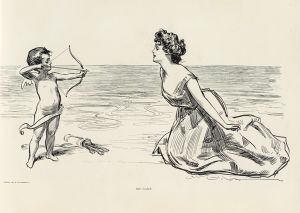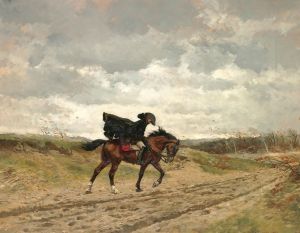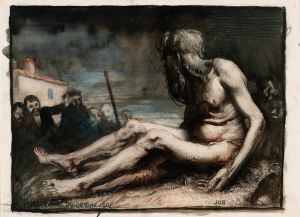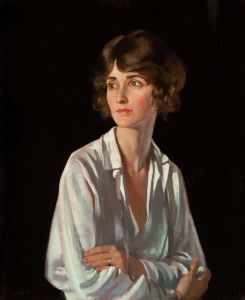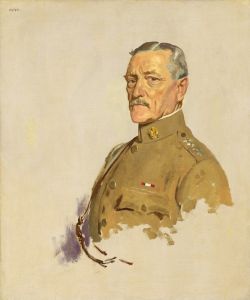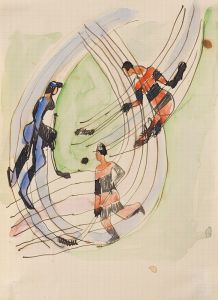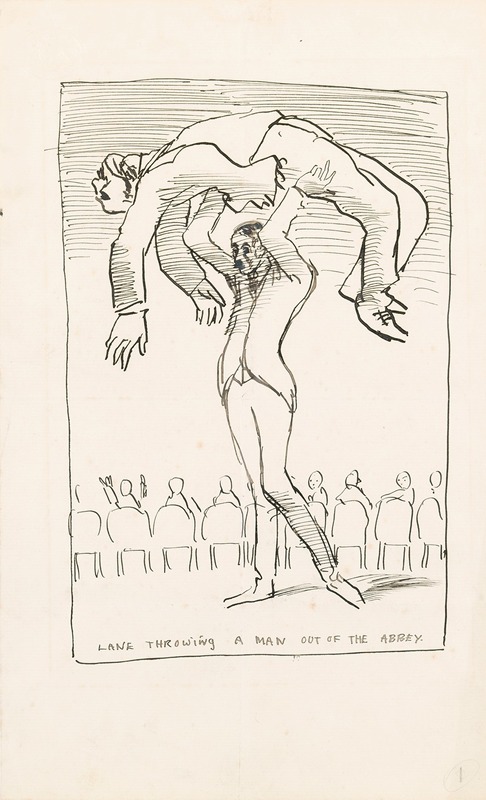
Lane Throwing a Man out of the Abbey
A hand-painted replica of William Orpen’s masterpiece Lane Throwing a Man out of the Abbey, meticulously crafted by professional artists to capture the true essence of the original. Each piece is created with museum-quality canvas and rare mineral pigments, carefully painted by experienced artists with delicate brushstrokes and rich, layered colors to perfectly recreate the texture of the original artwork. Unlike machine-printed reproductions, this hand-painted version brings the painting to life, infused with the artist’s emotions and skill in every stroke. Whether for personal collection or home decoration, it instantly elevates the artistic atmosphere of any space.
"Lane Throwing a Man out of the Abbey" is a painting by the Irish artist Sir William Orpen, completed in 1910. Orpen was a prominent figure in the early 20th-century art scene, known for his portraiture and his involvement with the official war art program during World War I. This particular painting is one of his lesser-known works but is notable for its subject matter and execution.
The painting depicts a dramatic scene involving Sir Hugh Lane, an influential art dealer and collector, who is shown physically ejecting a man from an abbey. The identity of the man being thrown out and the specific abbey are not clearly documented, which adds an element of mystery to the artwork. Sir Hugh Lane was a significant figure in the art world, particularly known for his efforts to establish a modern art gallery in Dublin. His collection eventually became the foundation for the Dublin City Gallery, The Hugh Lane.
Orpen's style in this painting reflects his academic training and his ability to capture dynamic movement and emotion. The composition is marked by its strong use of light and shadow, which adds to the dramatic tension of the scene. The figures are rendered with a keen attention to detail, showcasing Orpen's skill in portraiture and his ability to convey narrative through visual means.
The painting's historical context is tied to the early 20th-century art movements and the cultural milieu of the time. Orpen was associated with the New English Art Club, which was instrumental in introducing Impressionism to British audiences. His work often bridged traditional academic techniques with more modernist approaches, making him a versatile and influential artist of his time.
"Lane Throwing a Man out of the Abbey" is part of Orpen's broader oeuvre, which includes portraits of notable figures, genre scenes, and war paintings. His work during World War I, in particular, brought him considerable acclaim, as he was appointed an official war artist and produced a significant body of work documenting the conflict.
The painting is housed in a private collection, and as such, it is not as widely accessible as some of Orpen's other works. This contributes to its relative obscurity in comparison to his more famous pieces. However, it remains an interesting example of Orpen's narrative skill and his ability to capture complex interpersonal dynamics.
In summary, "Lane Throwing a Man out of the Abbey" is a testament to William Orpen's artistic prowess and his engagement with the cultural and social issues of his time. While not as well-known as some of his other works, it provides insight into the artist's narrative capabilities and his connection to significant figures in the art world, such as Sir Hugh Lane.








